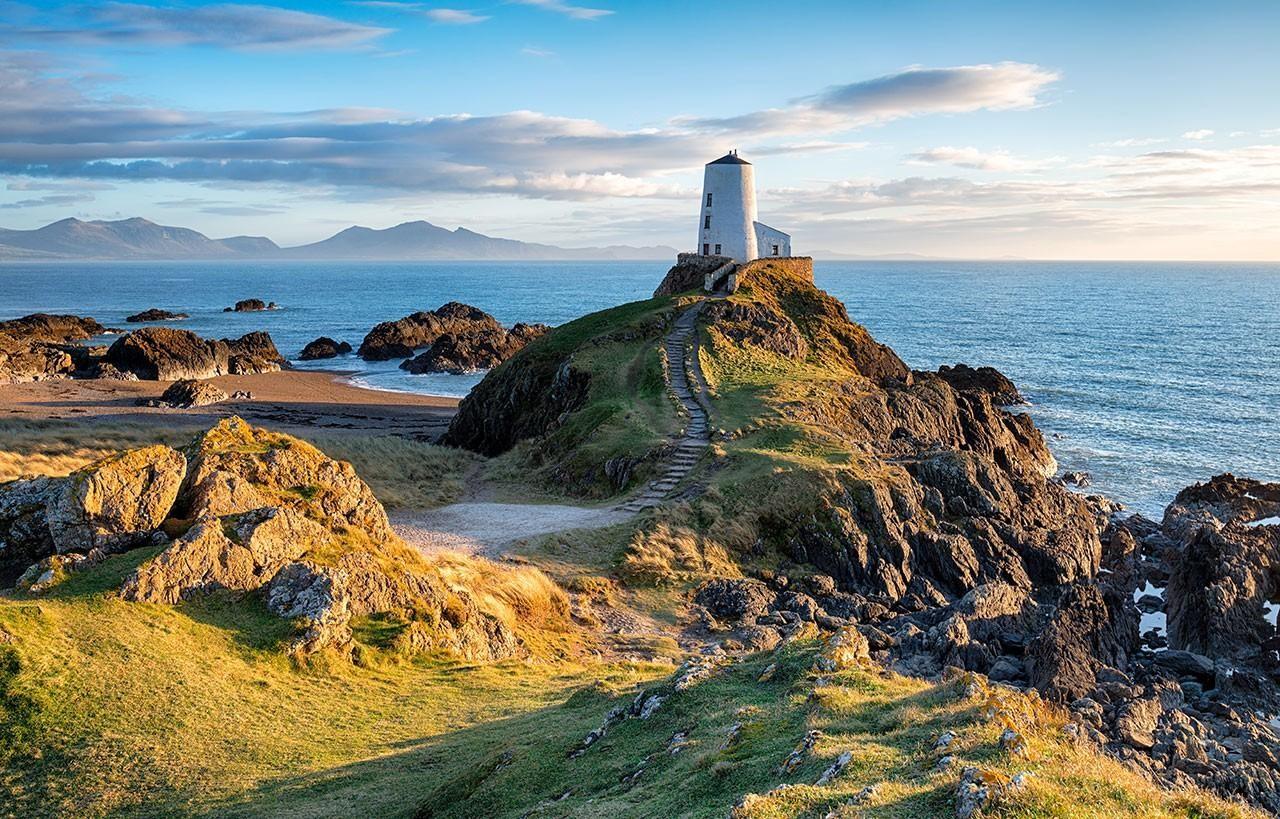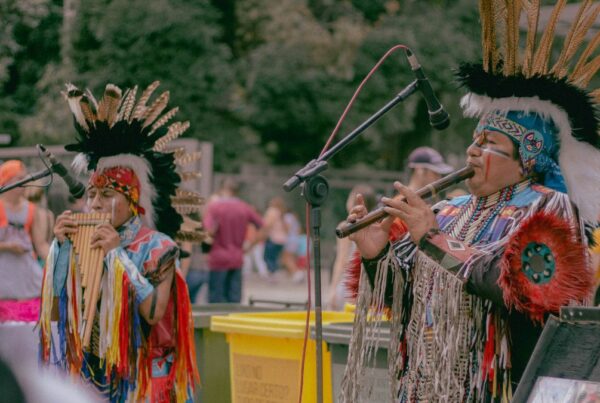Ynys Môn is the Welsh name for Anglesey Island. Anglesey is by far the largest island in Wales and the seventh largest in the British Isles. Anglesey is also the largest island in the Irish Sea by area.
Anglesey is known as the “Mother of Wales”: it is considered to be its centre, though geographically, it is anything but. Anglesey, in Gaelic “Ynys Mon”, is derived from the Roman Mona.
Some have argued that it possibly might have been Avalon, a name well-known in Grail mythology.
The rural coastline has been designated an Area of Outstanding Natural Beauty because it has many sandy beaches, bays and the north coast has dramatic cliffs.
The Anglesey Coastal Path circumscribes the island. It is 124 miles (200 km) long and passes by/through 20 towns and villages. The official starting point is St Cybi’s Church in the town of Holyhead on Holy Isle.
The Bryn Celli Ddu Bach site and nearby Bryn Celli Dhu passage tomb is a renowned archeological site dated to the time of the Druids.
It was initially built for rituals and to coincide with the summer solstice. On the longest day of the year, the sun’s rays shine down the passage way and illuminate all of the chamber with a mysterious glow.
In 2006, an aerial survey of Anglesey produced a remarkable image of a large pentangular earthwork on the north coast of Anglesey.
The earthwork, known as Y Werthyr, has long been known about but until the aerial survey was taken nobody knew its full extent. It had never been excavated, nor properly identified.
If comparisons with other sites on the island are correct then Y Werthyr is one of a small group of pentangular or polygonal enclosures that date from the middle to late Iron Age.
This was the time when, according to classical sources, the island of Anglesey was the centre of the ancient Britons’ Druidic priesthood.
To learn more about Y Werthyr, watch the National Geographic documentary I included below.
1. The Ancient Druidic Mysteries Buried Under Anglesey
The Island of Anglesey was once home to one of history’s most mysterious groups: the Druids. The Romans accused them of magical rituals, human sacrifice and even cannibalism, and soon after the invasion, the full force of the Roman army descended on this small island. Their mission: to destroy this stronghold of the British resistance.
2. Bryn Celli Ddu Bach Archeological Site
Archaeologists currently excavating a 4,000 year old Bronze Age burial site are linking it to mysterious ancient sorcerers. The ‘Bryn Celli Ddu Bach’ site is located on the British island of Anglesey in an area that has long been associated with Druids and their rituals.
3. The Druids’ Last Stand On Anglesey Island
The Island of Anglesey was once home to one of history’s most mysterious groups: the Druids. The Romans accused them of magical rituals, human sacrifice and even cannibalism, and soon after the invasion, the full force of the Roman army descended on this small island. Their mission: to destroy this stronghold of the British resistance.
The Holy Isle

Divided from Anglesey Isle by a narrow channel, Holy Isle is a place of magic and mystery steeped in Druidic history.
Holy Island comes from the Welsh: “Ynys Gybi”, which means the island of Saint Cybi. The English call it Holyhead Island. It is called “Holy” because of the very high concentration of standing stones, burial chambers, and other religious sites on the tiny island.
The photo above is of a mural of the wizard Cybi in Holyhead, Anglesey. Santi Cybi was a 6th-century Cornish bishop, saint, and briefly the king of Cornwall before he decline the throne and became a wandering preacher.
The western side of the island is taken up mainly by Holyhead Mountain, an area of maritime heather moor, which is the highest peak in the county at 722 feet (220 m).
- 10 Best Peru Hiking Tours And Multi-Day Treks In The Andes - April 19, 2025
- 10 Best Banff Hiking Tours In The Canadian Rockies - April 19, 2025
- 10 Best Vancouver Hiking Tours In The BC Coast Mountains - April 19, 2025





